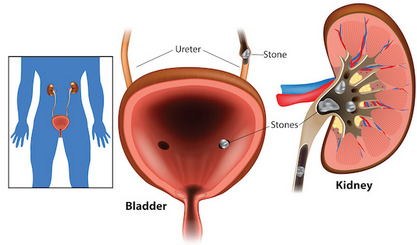
The postnatal period is an essential time for new mothers to recover physically and emotionally after childbirth. While the excitement of bringing a new baby into the world is overwhelming, it is equally important to focus on the recovery process for the mother’s well-being. The body goes through immense changes during pregnancy and childbirth, and healing requires attention, self-care, and support. Understanding how to support postnatal recovery is crucial for ensuring that new moms regain their strength and well-being in a healthy and sustainable way. In this article, we will explore key steps to help new mothers recover physically, mentally, and emotionally during the postnatal period.
Effective postnatal recovery involves a holistic approach that includes proper nutrition, physical recovery, emotional support, and self-care strategies. By following these steps, new moms can ensure they feel supported as they navigate the challenges of the early days of motherhood while taking the necessary time to care for themselves.
1. Focus on Proper Nutrition for Healing and Energy
One of the most important aspects of postnatal recovery is maintaining a nutritious and balanced diet. Proper nutrition supports healing, replenishes energy levels, and aids in lactation. After childbirth, a new mother’s body needs essential nutrients to heal from the physical stress of delivery, whether vaginal or cesarean. Consuming nutrient-dense foods can help restore strength and promote healing.
Eat a Balanced Diet
A balanced diet rich in whole grains, lean proteins, fruits, vegetables, and healthy fats is vital during the postpartum period. These foods help the body recover and provide the energy needed to care for a newborn. Protein is especially important as it aids in tissue repair, while vitamins like vitamin C and zinc support immune function and wound healing.
Hydration Is Key
In addition to eating well, staying hydrated is crucial for postnatal recovery. Proper hydration supports milk production for breastfeeding mothers and helps prevent dehydration, which can lead to fatigue and headaches. Drinking plenty of water throughout the day, along with consuming hydrating foods like fruits and vegetables, is essential.
Include Iron-Rich Foods
Many new moms experience low iron levels after childbirth, particularly if they had significant blood loss during delivery. To combat this, incorporating iron-rich foods such as leafy greens, red meat, lentils, and fortified cereals can help replenish iron stores and prevent anemia.
2. Prioritize Rest and Recovery
While the demands of caring for a newborn can leave new mothers feeling exhausted, prioritizing rest is crucial for physical recovery. The body needs time to heal after childbirth, and adequate sleep and rest are essential components of that healing process.
Rest as Much as Possible
Though it may be difficult with a newborn, new mothers should try to rest as much as possible during the early weeks. This might mean napping when the baby sleeps or accepting help from family or friends so that you can take breaks and recover. Rest allows the body to replenish its energy stores, repair tissues, and restore balance.
Listen to Your Body
It’s important to listen to your body during the postnatal period. If you’re feeling pain or discomfort, it’s okay to take it easy and avoid overexerting yourself. The physical demands of childbirth can leave you with soreness, especially in the pelvic area, abdomen, or perineum. If you had a cesarean section, additional care is required, as your body will need more time to heal from the incision.
Gradually Increase Activity
While rest is essential, gradual movement and gentle exercise can also support postnatal recovery. After your doctor’s approval, incorporating light activities such as walking, pelvic floor exercises, and stretching can help improve circulation and restore muscle strength. Over time, as your body heals, you can gradually resume more intense physical activities.
3. Emotional Support and Mental Well-Being
Postnatal recovery is not only about physical healing but also about emotional well-being. The hormonal fluctuations, exhaustion, and adjustment to motherhood can lead to emotional challenges, such as anxiety, stress, or postpartum depression. It’s essential for new mothers to seek support during this time.
Reach Out for Help
Building a support network is crucial during the postnatal period. Don’t be afraid to reach out to family, friends, or professional support groups for help. Whether it’s for emotional support, assistance with household chores, or care for the baby, having people around you can alleviate some of the pressures of new motherhood.
Talk About Your Feelings
It’s important to talk about your feelings and not keep them bottled up. Expressing concerns, frustrations, or even joy can help manage emotional stress. Whether it’s through conversations with a partner, a trusted friend, or a therapist, verbalizing your emotions can promote mental well-being and help prevent feelings of isolation.
Seek Professional Support if Needed
If you are feeling overwhelmed or experiencing symptoms of postpartum depression, it’s important to seek professional support. Postpartum depression is common, but it’s treatable with the right care. A doctor or therapist can provide guidance on managing these emotions, whether through therapy, support groups, or medications if necessary.
Supporting postnatal recovery requires a holistic approach that focuses on proper nutrition, adequate rest, emotional well-being, and physical healing. By understanding how to support postnatal recovery, new mothers can take proactive steps to regain their strength, balance their emotional health, and feel confident in their new role as a mom. Remember that recovery is a gradual process, and it’s important to be patient with yourself. By making time for self-care, accepting help when needed, and nurturing both your physical and mental health, you can successfully navigate the postpartum period and embrace motherhood with strength and resilience.










 Kidney stones are a common and painful condition that affects millions of people worldwide. These hard mineral deposits form in the kidneys and can lead to severe discomfort when they move through the urinary tract. Understanding how to prevent kidney stones is crucial for maintaining optimal kidney health and avoiding complications. By adopting healthy habits and making informed choices, you can significantly reduce your risk of developing kidney stones.
Kidney stones are a common and painful condition that affects millions of people worldwide. These hard mineral deposits form in the kidneys and can lead to severe discomfort when they move through the urinary tract. Understanding how to prevent kidney stones is crucial for maintaining optimal kidney health and avoiding complications. By adopting healthy habits and making informed choices, you can significantly reduce your risk of developing kidney stones.
